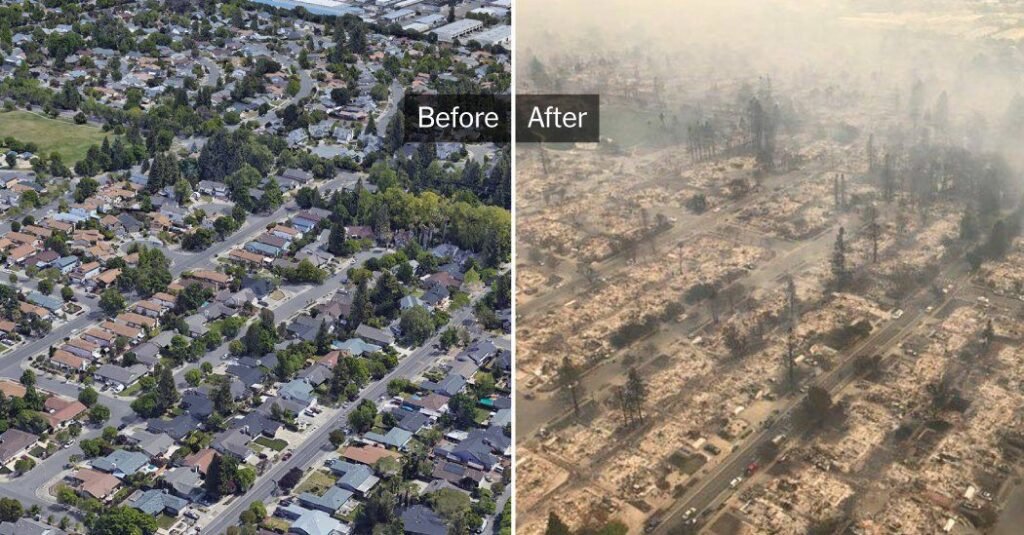Los Angeles, a city known for its glitz, glamour, and picturesque landscapes, has also become synonymous with devastating wildfires. Every year, wildfires ravage large swaths of land in and around Los Angeles, causing massive destruction to homes, infrastructure, and natural resources. These frequent wildfires have far-reaching consequences, one of the most significant being their impact on the real estate market.
The Growing Threat of Wildfires in Los Angeles
Wildfires in California, particularly in the Los Angeles region, have increased in intensity and frequency due to climate change, prolonged droughts, and expanding urban development into wildfire-prone areas. These fires not only destroy homes but also displace thousands of residents, leading to significant financial and emotional distress.

Impact on Property Values
One of the primary effects of wildfires on the real estate market is the fluctuation in property values. Properties located in high-risk wildfire zones often experience declining values as potential buyers become wary of the risks associated with living in these areas. Homeowners in affected neighborhoods may struggle to sell their properties, leading to longer market times and potential financial losses. Conversely, properties in areas perceived as safer from wildfires may see an increase in demand, leading to price surges.
Insurance Challenges and Rising Costs
Insurance companies have responded to the wildfire crisis by raising premiums or, in some cases, refusing to provide coverage for homes in fire-prone regions. Homebuyers face increased costs due to the necessity of securing fire insurance, which can be prohibitively expensive. Additionally, some existing homeowners find themselves dropped by their insurers, forcing them to seek alternative, often more expensive, coverage options.
Shifts in Buyer Preferences
The recurrent threat of wildfires has led to a shift in buyer preferences. Many prospective homebuyers are now prioritizing properties with fire-resistant features, such as fire-resistant materials, defensible space landscaping, and proximity to emergency services. There is also a growing interest in urban properties and communities with lower wildfire risks, causing a shift in demand away from hillside and forested areas.
Rebuilding and Development Challenges
After wildfires, the rebuilding process is often slow and expensive due to stricter building codes, increased construction costs, and lengthy permit approvals. Many homeowners face financial hardship if they are underinsured or if rebuilding costs exceed their insurance payouts. Additionally, developers are becoming more cautious about investing in wildfire-prone areas, which could impact future housing supply.
Long-Term Market Implications
While Los Angeles remains a highly desirable location, the increasing frequency of wildfires could lead to long-term shifts in the real estate market. Buyers and investors may seek safer alternatives, and policymakers may implement stricter zoning regulations to limit development in high-risk areas. Sustainable building practices and fire mitigation strategies will likely play a more prominent role in future real estate trends.
Conclusion
Los Angeles wildfires have undeniably altered the landscape of the real estate market. With rising insurance costs, shifting buyer preferences, and increasing risks, both buyers and sellers must adapt to the changing environment. As climate change continues to exacerbate wildfire threats, proactive measures and sustainable development will be crucial in ensuring the resilience of the Los Angeles real estate market.
